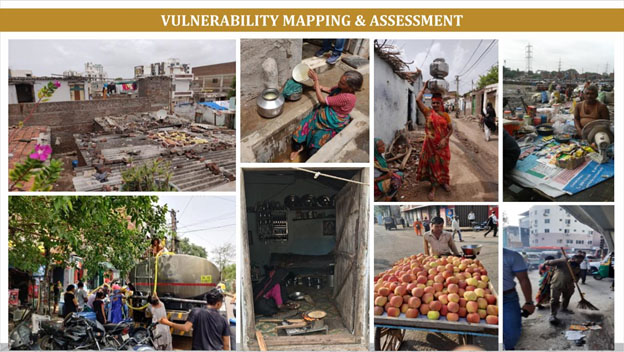By Rohit Magotra and Ananya Bhatia, Integrated Research and Action for Development (IRADe), New Delhi, India

India’s megacities face a critical challenge: the escalating impact of extreme heat. In 2024, approximately 150 heat-related deaths and nearly 42,000 suspected heatstroke cases were reported, highlighting the urgent need for improved heatwave preparedness and response systems. Existing Heat Action Plans (HAPs) often lack adequate funding, local adaptation, and targeted protection for vulnerable populations.
The Integrated Research and Action for Development (IRADe) pioneered Heat Stress Action Plans (HSAPs) that set a new standard. These spatially differentiated, ward-level HSAPs focused on vulnerable populations and identified heat hotspots. Implemented in cities like Delhi, Rajkot, Bhubaneswar, Surat, Colombo (Sri Lanka), and Rajshahi (Bangladesh), they led to significant policy changes. The “Climate Adaptive Heat Action Plan to Manage Heat Stress in Indian Cities,” supported by the International Development Research Centre (IDRC) of Canada, extended HSAPs to Delhi, Bhubaneswar, and Rajkot. Meanwhile, the “Integrating Gender-Sensitive Heat Adaptation Plans in the Climate Policy and Guidelines of Selected Cities in South Asia,” funded by the Asia-Pacific Network for Global Change Research (APN), emphasised gender-sensitive approaches in cities like Colombo, Rajshahi, and Surat.
Pioneering a New Standard: Spatially Differentiated Climate Adaptive Heat Action Plans
IRADe’s HSAPs have set a new benchmark for heatwave management. These plans are spatially differentiated, focusing on ward-level data to identify heat hotspots within a city. Additionally, they prioritise the needs of vulnerable populations most susceptible to heat stress, including outdoor workers, low-income residents in poorly ventilated housing, and the elderly. Notably, cities like Delhi, Rajkot, Bhubaneswar, and Surat in India have successfully implemented HSAPs, resulting in significant policy changes to address extreme heat challenges.
From Research to Action: Multi-pronged Approach
The success of Heat Stress Action Plans (HSAPs) hinges on their multifaceted approach. Policy advocacy plays a crucial role, with research findings informing policy changes at the state and city levels. For instance, the Odisha Heat Action Plan 2020 incorporated vulnerability assessments and heatwave impacts, while the Rajkot Municipal Corporation adjusted heat wave alerts to prevent heat-related mortality. In Delhi, a Heat Stress Advisory was collaboratively developed with the New Delhi Municipal Corporation (NDMC) and translated into Gujarati for Rajkot. Capacity-building efforts involved workshops for over 200 medical professionals in Bhubaneswar, Rajkot, and Delhi, focusing on managing heat-related illnesses. Advocacy also led to the inclusion of heat stress prevention measures on prescription slips in New Delhi hospitals. Additionally, HSAPs were widely disseminated to policymakers, stakeholders, and communities in Bhubaneswar, Rajkot, and Delhi. Communication efforts included door-to-door surveys, pamphlets in regional languages, LED screens, hoardings, posters, and press releases, reaching nearly 970 households with information about heat wave impacts.
Socio-Economic Impact and Knowledge Sharing
The HSAPs resulted in significant socio-economic benefits. By identifying vulnerable populations and hotspots, targeted heatwave management strategies were implemented. The Heat Stress Advisory raised awareness among the working class, potentially enhancing productivity during hot weather. Urban local bodies established ORS (Oral Rehydration Solution) corners and Rapid Response Teams to strengthen resilience during peak summer. Additionally, the South Asian Heat Health Information Network (SAHHIN) facilitated regional collaboration, addressing the increasing intensity and duration of heatwaves.
IRADe’s HSAPs demonstrate a successful model for mitigating heat stress and building climate resilience in South Asian cities. Their evidence-based strategies, focused capacity building, and extensive community outreach offer a replicable approach for other urban centres facing the growing threat of extreme heat. The establishment of SAHHIN strengthens regional collaboration and ensures continued knowledge exchange to tackle future heatwave challenges.
Disclaimer: The views expressed in this piece are those of the author/s and do not necessarily reflect the views or policies of AIDMI.